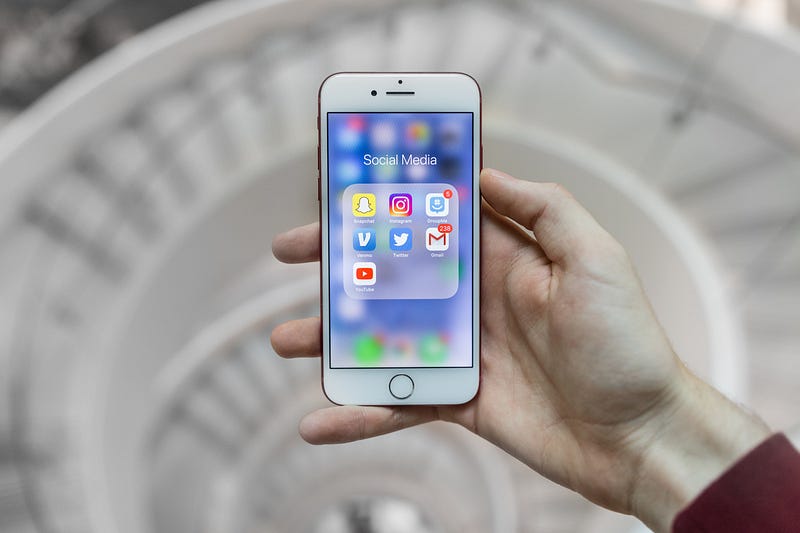The Other Citizen Science: Social media and the distribution of scientific information
By Rachel Powell, Undeclared, 2022

This article was originally posted as part of Issue 37: Interaction.
Social media allows people around the world to communicate and share ideas with one another faster than ever before. People have limitless scientific information at their fingertips, and this can create opportunities to access current research and interact with scientists in various fields. At the same time, the information that goes viral is not always as unbiased as the original articles found in academic journals.
Popular social media platforms such as Twitter and Facebook can introduce the general public to new scientific ideas and advancements, connect patients experiencing the same diseases and treatments, and allow researchers to network with colleagues and participate in open peer reviews more efficiently. During a recent study, researchers at the University of Alberta found that discoveries promoted through Twitter were cited more. New research seems to disseminate more quickly via social media than it does by more traditional methods.
“Social media has certainly made things a lot more visible,” said Dr. Thomas Koenig, a sociology professor at Northeastern University. “The disadvantage is it can also distort things, and the most interesting story tends to win.”
According to a 2013 article published in PLOS Biology, when scientific research goes viral, it can reach a global audience. Researchers can also use blogs and social media to exchange details about articles, opinions, and conferences with one another.
“Social media has certainly made things a lot more visible,” said Dr. Thomas Koenig, a sociology professor at Northeastern University. “The disadvantage is it can also distort things, and the most interesting story tends to win.”
Although social media has brought scientific information into daily life, it has the potential to be biased, miscited, exaggerated, or taken out of context. Koenig said that rules and norms in academic research focus on the ways in which information must be explained. Articles in academic journals must describe various factors including sample size and limitations to the data. Academics tend to be cautious about making claims and carefully describing the context.
“One of the things you do in an article is to lay out all the limitations, and the idea is that people are supposed to, with goodwill, then build on this,” Koenig said. “Once something goes viral and is turned into a universal truth, it becomes very difficult to do that.”
A 2017 study published in the Oxford Research Encyclopedia of Climate Science investigated the relationship between social media use and awareness of climate change. The study concluded that although social media can bring environmental activists together and promote meaningful discussion, it can also give skeptics a platform and a way in which to publicize their perspective to a global audience. Therefore, political groups with opposing views on the issue of climate change can both use social media to spread the message that reflects their beliefs.
“People usually read media that they tend to believe, so the center gets wiped out,” Koenig said. “People get caught in an echo chamber.”
“One of the things you do in an article is to lay out all the limitations, and the idea is that people are supposed to, with goodwill, then build on this,” Koenig said. “Once something goes viral and is turned into a universal truth, it becomes very difficult to do that.”
This phenomenon can be compared to the game of telephone, in which information is passed from person to person with each individual adding their own bias. It can be used as a political tool when the information is controversial, emotional, or vague. Furthermore, organizations may fund research in ways that suit their individual agendas, and this biased research can be quoted widely. Koenig said that information can get used in various ways as long as it sounds true. This is also common with information obtained during studies conducted on college campuses, because the sample size is limited and students are a diverse populace that varies by campus.
“I’ve seen a lot of things that might be done with a small number of students at one university that then get blown up as if they are human nature,” Koenig said. “People hear these things, and frequently they have no outside way of checking anything. You often find if you trace things back that there is very little there in the first place.”
Sources:
PeerJ 2018. Doi: https://doi.org/10.7717/peerj.4564
PLOS Biology 2013. Doi: 0.1371/journal.pbio.1001535
Oxford Research Encyclopedias 2017. Doi: 10.1093/acrefore/9780190228620.013.369
